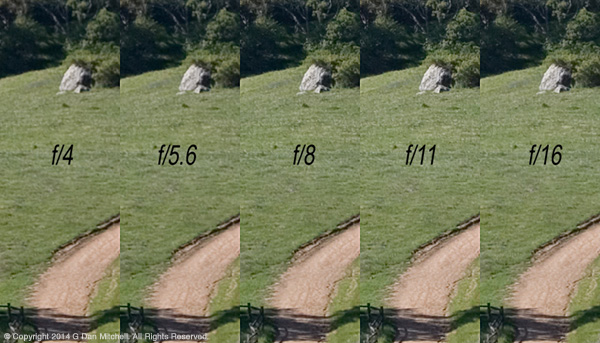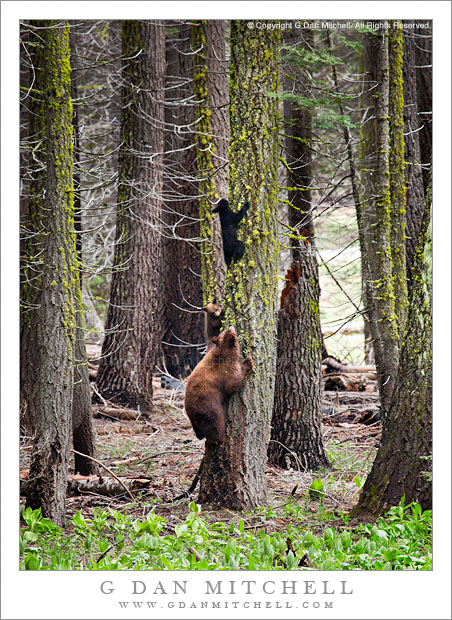(Note: This article has been slightly revised and updated since it was originally posted in 2012.)
From time to time I share here my response to a question that I fielded somewhere else. In this case, the subject concerned whether or not a beginner getting a new DSLR should start out with a “normal” 50mm prime lens. Here is a slightly edited version of what I wrote.
Every so often a beginning photographer buying their first DSLR, typically a cropped sensor model, will be advised to “get a 50mm prime,” either as their only lens or as an adjunct to the “kit zoom” that likely comes with most entry-level DSLRs. Some say you should do this because you must learn to shoot with a prime before you are ready for a zoom. (This is nonsense, in my opinion.) Others suggest that folks should get the prime because good and inexpensive versions are available – which is true, but not a reason to buy one.
I’m here to say that there is little or no good reason for a beginning DSLR photographer to get a 50mm prime—especially a 50mm prime—with their new camera. Get the kit zoom and start making photographs.
The advice to get a 50mm prime comes from a very different set of circumstances and a very different time. When 35mm film SLRs first became available some decades ago, decent zoom lenses were not available at prices that beginners would contemplate paying, if they were even available at all. (Those shooting 35mm rangefinder cameras found even more impediments to the idea of using a zoom.) In fact, photographers generally didn’t use them. “Zoom or prime?” was not the question at all – primes were the only realistic option.
The general feeling was that something in the 50mm focal length range or thereabouts could be the ideal starter “normal” lens on a 35mm film camera. (This was not a universally held viewpoint – some preferred lenses a bit wider and some of the standard primes came in longer focal lengths such as 55mm.) A 50mm +/- prime was the first lens that most folks got with their new film SLR, and there were lots of fine and inexpensive options. You got your camera and you got your 50mm prime. In fact, if you got a SLR “kit,” it was camera plus a 50mm or so prime, probably a f/2 or f/1.8 version. The fact that we still have lenses like Canon’s EF 50mm f/1.8 at such a low price is a result of that history.
In reality, the valid advice back then was to “get a 50mm prime and learn to shoot it before buying more lenses.” The source of this advice had nothing at all to do with a zoom versus prime question. Primes were the only option. The implication actually was don’t get sucked into buying a bunch of lenses before you know what you are doing or what you need. (We are all aware of how tempting it can be to allow gear acquisition syndrome to supplant photography.) In other words, get a first lens, shoot a lot with it, learn a lot from doing so, and only then start to consider what your experience tells you about the need for (maybe) getting other lenses.
That warning still holds true, but keep in mind that it is a actually warning against rushing out and buying lots of stuff. Today, the better, and far more likely, first lens choice is going to be a zoom. There are excellent, inexpensive options available today that have supplanted the old-school inexpensive 50mm prime as the logical first lens. Every manufacturer has at least one fine and inexpensive “kit” zoom lens. The more accurate modern update of the old “buy a 50mm prime, learn to shoot before you buy more lenses” is actually:
Get the kit zoom, and learn to shoot before you invest in more lenses.
(In fact, a logical extension of this advice is to shoot a lot with your kit zoom before getting sucked into buying… a 50mm prime!”)
Among those “other lenses” you can wait to acquire are primes. A person starting out with a cropped sensor DSLR almost certainly does not need to get an additional lens at first, any more than the beginning 35mm film SLR buyer needed to buy a set of three primes “back in the day.” It is true that the new photographer may eventually travel a photographic path on which owning a prime is useful, but before that happens he or she can shoot at this same focal length on the 18-55mm kit zoom and find out.
Secondly, and to repeat the obvious, a 50mm prime on a cropped sensor DSLR does not even provide the same functionality as the 50mm prime on the 35mm film SLR. IF you accept the notion that shooting a prime is important at first—though I emphatically do not—it would not be a 50mm prime, but the angle-of-view equivalent for a cropped sensor camera. This would be a roughly 31mm lens for a 1.6x crop factor body. (If this were not the case, 80mm would have been the “normal” prime FL on those early film cameras. In short, it wasn’t.)
So, start out with kit zoom that is available for your new DSLR. Shoot a lot before you start buying a bunch of other lenses. See what happens. If it turns out that the kit lens really limits your photography, you’ll figure that out based on your experience with this lens – and you’ll also begin to more clearly understand the things that you might need in order to overcome any such limitations. Your interests and needs are likely to evolve in ways that you cannot accurately anticipate until you do a lot of shooting – a task for which the kit lens is perfectly suited.
As you do this, one of several things might happen. A very large percentage of those who start with the kit lens find that it is really all the lens they need, and they do not get anything else. Others discover that the kit lens works well but that perhaps they want more “reach” for some subjects, at which point they look for a suitable longer focal length lens. Others might discover that they need something wider. Yet another photographer might discover that he/she is shooting a lot at one particular focal length, needs a larger maximum aperture, and needs a smaller camera/lens package – in which case a prime at that favored focal length might be useful. And there are many other possibilities that I can’t list here.
There’s always time for that prime later on if you discover you need it. I’m betting that most beginners won’t, but that those who do will figure it out soon enough and make a much smarter decision by waiting.
(Note of clarification for those who may read too quickly: A few people have misconstrued this article as being anti-prime or suggesting that there is something wrong with a 50mm lens. A more careful reading of the article will confirm that this is not the case. The context is entirely about the beginning photographers getting his/her first DSLR. Depending upon what sort of photography one eventually ends up doing, primes including the 50mm focal length may turn out to be very useful. As a matter of fact, I own more primes than zooms… though I do use the zooms more than the primes. That is probably a subject for another article. ;-)
This article is part of my Photographic Myths and Platitudes series.
 G Dan Mitchell is a California photographer and visual opportunist. His book, “California’s Fall Color: A Photographer’s Guide to Autumn in the Sierra” is available from Heyday Books and Amazon.
G Dan Mitchell is a California photographer and visual opportunist. His book, “California’s Fall Color: A Photographer’s Guide to Autumn in the Sierra” is available from Heyday Books and Amazon.
Blog | About | Flickr | Twitter | Facebook | Google+ | 500px.com | LinkedIn | Email
All media © Copyright G Dan Mitchell and others as indicated. Any use requires advance permission from G Dan Mitchell.
Like this:
Like Loading...



